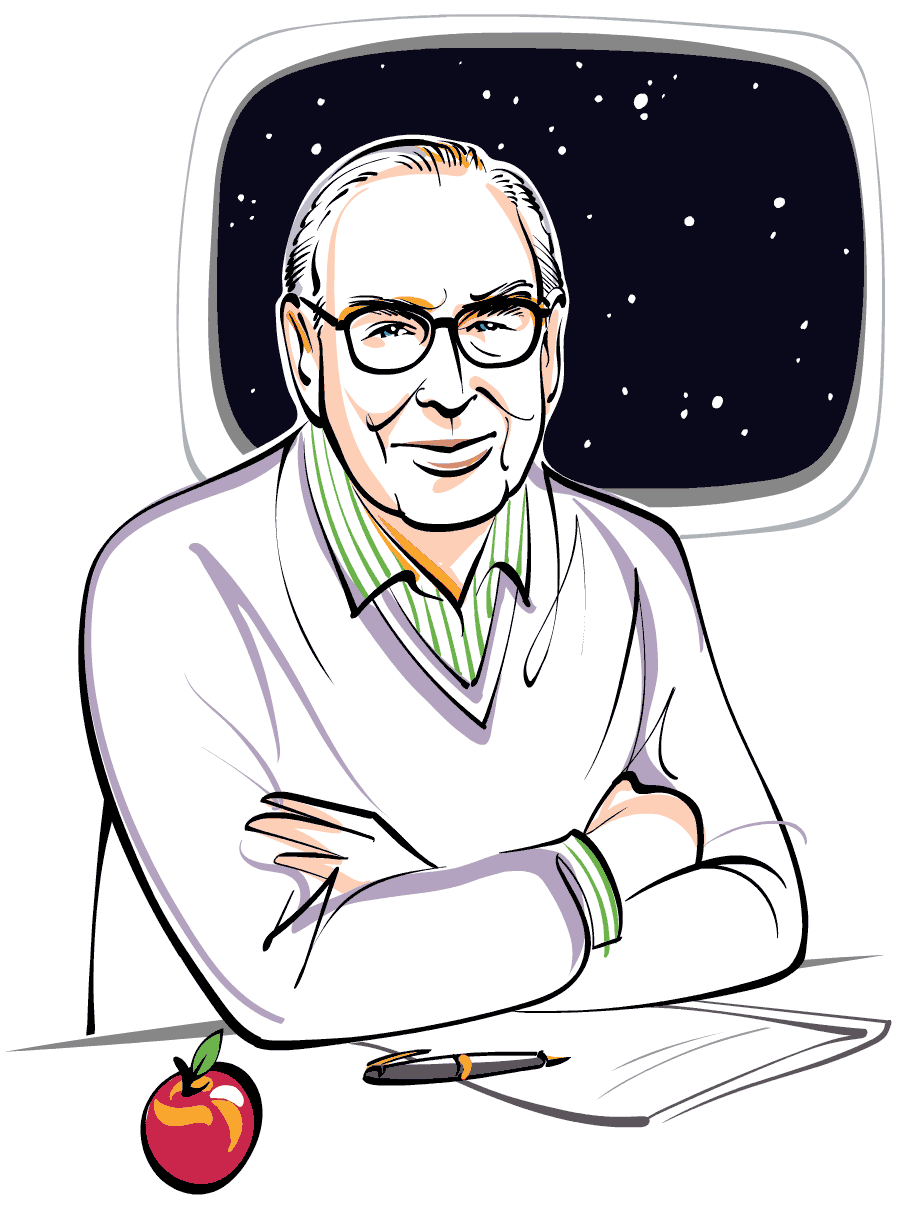
Apollo 13’s accident happened at probably the best time for NASA. It was the fifth Apollo flight to the moon, and by the time it took off, people at home were getting bored. Just before the explosion, I was in the lunar module doing a TV broadcast. I was filming Fred Haise, who was telling everybody back on Earth what we had onboard. Nobody cared. On one network was a talk show. The second network had a rerun of I Love Lucy. And the third had a ball game that everybody was watching, including people in the Mission Control Center. Then the explosion occurred and suddenly it became: Can we save these guys? If I had been part of the third lunar landing, do you think you’d be talking to me right now?
I’m not a risk taker. I don’t step into anything before knowing the odds, and I weigh them very carefully.
On Apollo 8, we were on the dark side of the moon, which was 60 miles below us. As we kept on going around, we suddenly saw the Earth coming into view 240,000 miles away. I could put my thumb up to the window and everything I ever knew was behind it. Billions of people. Oceans. Mountains. Deserts. And I began to wonder, Where do I fit into what I see? Then I remembered an old saying, “I hope to go to heaven when I die,” and realized that I actually went to heaven when I was born. I arrived on a planet with the gravity to contain water and an atmosphere — the very essentials for life! I arrived on a planet orbiting a star at just the right distance to absorb that star’s energy without being too hot or too cold. So my philosophy is that God has given mankind a stage upon which to perform, and how the play will come out is up to us.
When I was a navy test pilot, I got a Phantom supersonic jet up to Mach 2. That evening, I went home and told my wife. Well, she was quite impressed. Fast-forward. I’m retired and we’re going to France via the Concorde for some big astronaut reunion. The plane keeps going higher and higher and faster and faster. We’re not even strapped in, and we’re drinking Champagne. In front of us are two indicators: a Mach meter and an altimeter. We were up to about 45,000 feet and doing Mach 2. Marilyn says to me, “What’s the big deal?”
Apollo 8 was to take off in December 1968, and we’d still be around the moon at Christmastime. My two companions, Frank Borman and Bill Anders, wrote farewell letters to their wives, just in case. I didn’t. Instead, I went to Neiman Marcus and bought my wife a mink jacket. I had it delivered on Christmas Day with a note that said, “To Marilyn: Merry Christmas from the man on the moon.”
When I found out Tom Hanks was playing me in Apollo 13, I invited him for a weekend to a house we have in Horseshoe Bay, Texas. He flew into Austin and I picked him up in my airplane. I thought, You know, if this guy is going to play a naval aviator, we’ve gotta get started right away. After we took off, I said, “Here are some things you should learn to feel in the airplane.” And I started to go up and down to get to zero G. He was hanging in there and not saying anything. Then when we got near the airport, I wanted to show him what it was like the time I lost all my instruments. “You see the runway down there?” I said. “OK, now I’m turning off all the lights in the airplane.” We were flying blind. He was glad to be back down on the ground after that.
I miss flying. You leave the Earth and all your troubles behind, because you have to be very attentive to what the airplane is doing. Your ears have to tell you what’s going on with the engines. Your eyes have to look at the instruments and what’s outside the cockpit. You and the airplane are a single entity.



